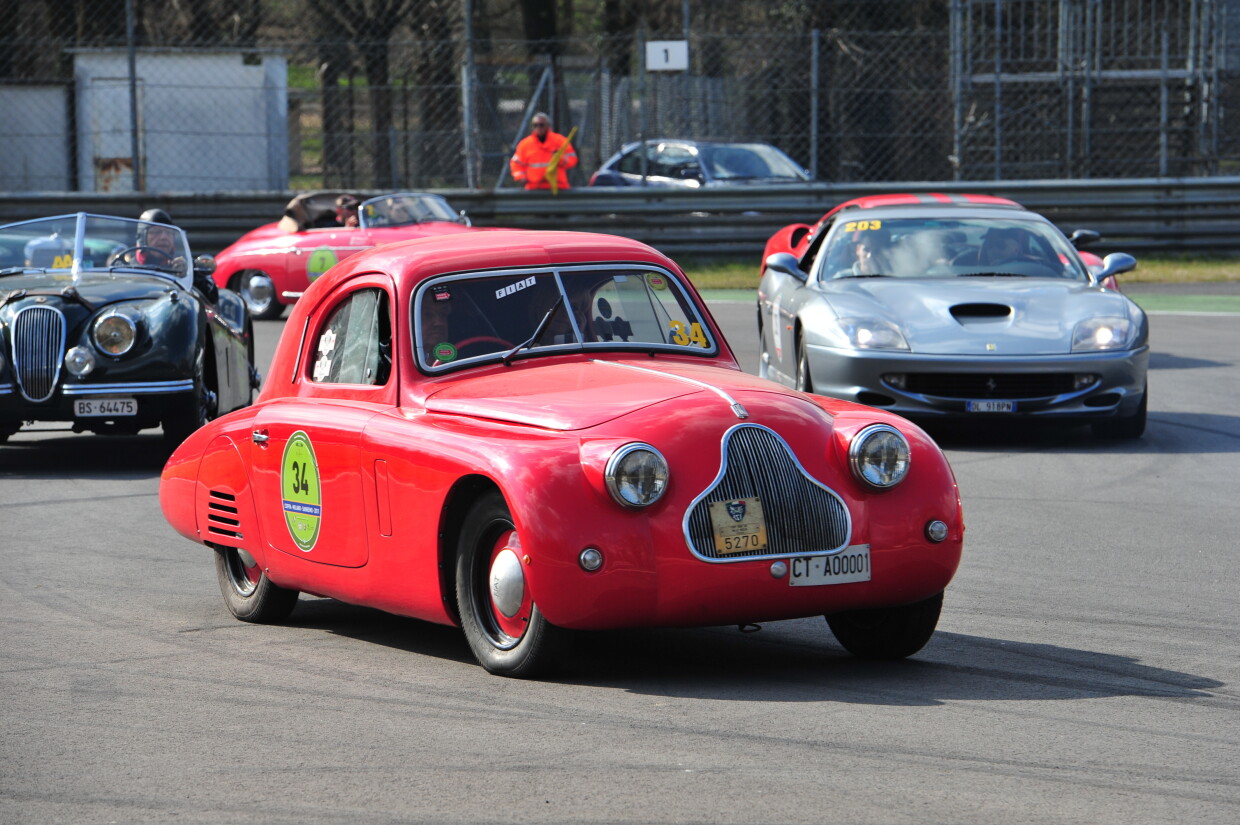
1939 Fiat 508 CMM
ON/OFF
Why am I an Automotive Masterpiece?
L. Limited edition cars
. 1 of 2 known and remaining.
The story begins with the "Balilla," the iconic car that FIAT launched in the 1930s, marking the beginning of Italy’s mass motorization. The name itself was steeped in the propaganda of the era, yet the car garnered widespread affection and became a beloved symbol of mobility. Almost every Italian family has a memory tied to this car. The Balilla laid the foundation for an entire lineage of FIAT cars, culminating in the 1100 series, with the Fiat 508 C serving as the pivotal link. Introduced in 1937, the Fiat 508 C replaced the Balilla’s original 1-litre engine with a more powerful 1,089 cc 4-cylinder unit, bringing new performance standards to its class. Designed by notable automotive engineers and designers of the time—Tranquillo Zerbi, Antonio Fessia, Bartolomeo Nebbia, and Dante Giacosa—the Balilla offered a blend of elegance, performance, and affordability. This team of visionaries created a vehicle that could compete with higher-end cars while remaining accessible to the masses. Last evolution of this lucky model and, so, initially marketed as the “Nuova Balilla 1100” in advertising materials, the 508 C quickly became known simply as the "1100," a name that resonated with motorists. Between 1937 and 1939, Fiat produced approximately 57,000 units across various body styles, including Cabriolet, Berlina, and Berlina tetto apribile (open top). Priced at 19,500 Lira, it was a car that took a decisive step ahead of the Balilla: it combined style with practicality, offering rounded, aerodynamic lines inspired by the FIAT 1500. Under the hood was the Fiat 108C engine—a 1,089 cc inline 4-cylinder overhead valve (OHV) engine paired with a 4-speed gearbox. With a power output of 32 hp at 4,000 rpm, the car could reach a top speed of 95 km/h, a remarkable feat for its price segment. The independent front suspension with transverse arms, coil springs, and hydraulic shock absorbers was a rarity in low-cost vehicles of the time, offering a smooth and comfortable ride. The Fiat 508 C was praised for its comfort, agility, and performance, earning it the nickname "the only people’s car that was also a driver’s car." Its sporting pedigree was highlighted by its participation in races, including the prestigious Mille Miglia. The car’s success on the track further cemented its reputation as a versatile and capable machine. In 1938, Fiat introduced the 508 L (Lunga), a long-wheelbase version capable of seating six passengers. This model became particularly popular as a taxi, thanks to its spacious interior and practicality. In 1939, the 508 C underwent a significant redesign of its front end, resulting in the so-called Fiat 1100 “Musone” (“big nose”), named for its prominent, vertical grille. This facelift marked the transition to a more imposing aesthetic, aligning with the stylistic trends of the late 1930s. The 508 C also left its mark culturally, with notable owners such as soccer player Gigi Meroni.
The Berlinetta Mille Miglia was launched in 1935, the mechanics were that of the 1934 Spider Sport with Fiat 108CS engine with Veix carburetor and the compression ratio increased to 7: 1, while the bodywork is that of an aerodynamic two-seater berlinetta, designed for raced in harsh climates such as the Mille Miglia. The solution turned out to be too heavy and was less competitive compared to the Spider Sport.
The chassis no 508CM*238700* was owned new by Ercole Boratto, racing driver, test driver and driver of the heads of government, becoming Mussolini's personal driver. The car participated in 1940 at the Gran Premio Brescia delle Mille Miglia with the new owner Gino Zordan and Eros Erasmo Crivellari for the Squadra Corridori Automobilisti Veneti, ranking 4th in class and 13th overall. At some point in his life, it’s transferred in England. From England the car passes through Holland and arrives in France. The car was found in France in the 1970s, on the occasion of a Fiat meeting, quite complete but to be restored; the car was still with an English license plate. It was purchased by Eng. De Bernardinis of Fiat, a figure close to the Agnellis, who had the mechanics restored at Fiat and the bodywork at the renowned specialist Diomante. The restoration took a long time. Eng. de Bernardinis never used it having, in the meantime, become the number one of Fiat Switzerland. The following and current owner consulted Edoardo Tenconi to rent a car to race the Mille Miglia. Through him, de Bernardinis was contacted, who didn't want to rent but decided to sell the car with chassis no 508CM*238700*. The buyer was interested but wanted it with a license plate. It was then that Tenconi re-registered the car with a Milan plate, registering it in his own name, and then sold it to the buyer who registered it with the iconic CT A00001 plate. The car has a long history of participation in the regularity championships for historic cars. It participated with Giuseppe Boscarino in 19 editions of the Mille Miglia re-enactment, from 1991 to 2018. In 2017 it was shown at the exhibition “90 anni, 1000 Miglia”.






